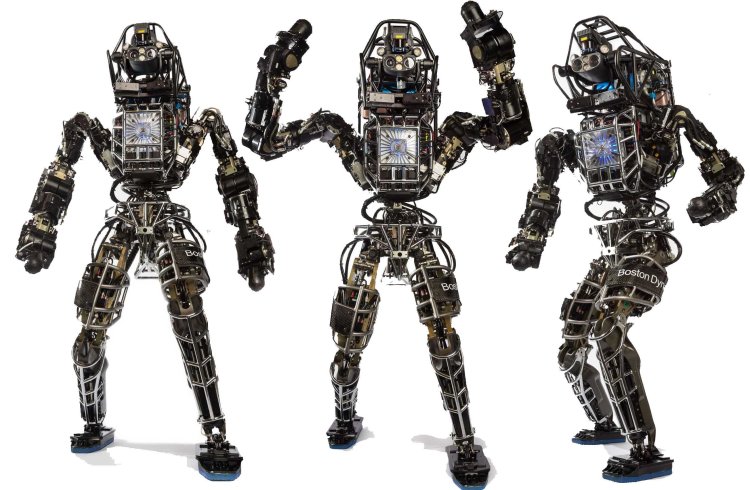Chuck Kalmanek is the former head of research at AT&T Labs. This post originally appeared on his blog.
With Google’s acquisition of the robotics firm Boston Dynamics –- its eighth purchase in this space — robotics jumped into mainstream consciousness.
If you weren’t paying close attention, your reaction was probably something like: “what’s that about?” If you were paying attention, and watched one or two videos about Boston Dynamics’ robots, you were either fascinated, terrified or both. There is something both uncanny and deeply disturbing about the machines Boston Dynamics has developed.
The best known is Big Dog, a quadruped robot designed for DARPA to serve as a pack animal for soldiers in rough terrain. The way that Big Dog ceaselessly prances, and recovers its balance when shoved, is both animal-like and machine-like. This amalgamation of attributes takes something comforting and familiar, and combines it with something alien and potentially threatening.
I’ve had a similar reaction to people wearing Google Glass. Glass turns an innocuous bystander into someone who is vaguely threatening. My reaction to these technologies reminds me of the story about the early days of motion pictures. As the story goes, in 1895, when an audience first saw a movie of a steam locomotive coming straight at them, they screamed and ran to the back of the house.
These technologies are taking us into places that we don’t thoroughly understand. It will take a while for the collective unconscious to catch up.
This is one reason that Google’s investment in robotics is so interesting. Google is playing the long game. Clearly, they’ve seen the huge advances in robotics over the last decade.
Much of this progress is driven by a focus on highly specialized applications. The DARPA Robotics Challenge and Japanese investment following the Fukushima disaster have focused on disaster recovery (the 2013 DARPA challenge is underway in Florida this weekend). In a similar vein, robotics applications ranging from industrial automation on automotive assembly lines; to remotely operated vehicles for space or underwater exploration, explosive ordinance disposal, and cleaning up oil spills; to commercialized agriculture, have become routine even if they are unfamiliar to most of us.
But Google the company is not one bit interested in specialized applications such as emergency responders or the military. Google focuses on appealing to consumers. It’s whole existence is because hundreds of millions of ordinary people use its search engine every single day, allowing it to make money as an intermediary between advertisers and their markets.
A well-managed company makes investments that are aligned with its core mission. If you believe that Google is a reasonably well-managed company (and I do), its leadership believes that robots will eventually touch large numbers of people. They believe that robots will both generate and use vast amounts of data. And, they are willing to push the envelope on robotics well before our culture is ready for it.
Like the proverbial field of dreams, if Google builds it, they will come.
Google brings assets to the table that enhance humanoid robots in very interesting ways. Your robot needs maps and navigation to get around. Check. It needs to be able to understand and speak multiple languages. Check. It needs to know everything about you, so that it can anticipate and better service your every whim. Check. None of this is ready for prime time, but Google is one of the few companies with deep enough pockets to dream this big.
Nobody knows which commercial application will hit the marketplace first or which will succeed — a humanoid version of Roomba that handles all of your mundane tasks, or a modern Furby that is your Best Friend Forever. But today’s advanced robots are the stuff of science fiction made real. We can be frightened by the world that technology is making possible. But the nature of that world is still determined by humans, not humanoids – by engineers and consumers, policymakers and investors.
It is up to humans to imagine and create a world we want to live in. I hope we’re up to the task.
Chuck Kalmanek is a technologist with a strong background in computer science, networks, and Internet services. He was Head of Research at AT&T Labs, where he led work to create advanced platforms, tools and services in the areas of large-scale service operations, cloud technology and services, and data management and analytics. Chuck is also a Fellow of the IEEE.
VentureBeat's mission is to be a digital town square for technical decision-makers to gain knowledge about transformative enterprise technology and transact. Learn More

